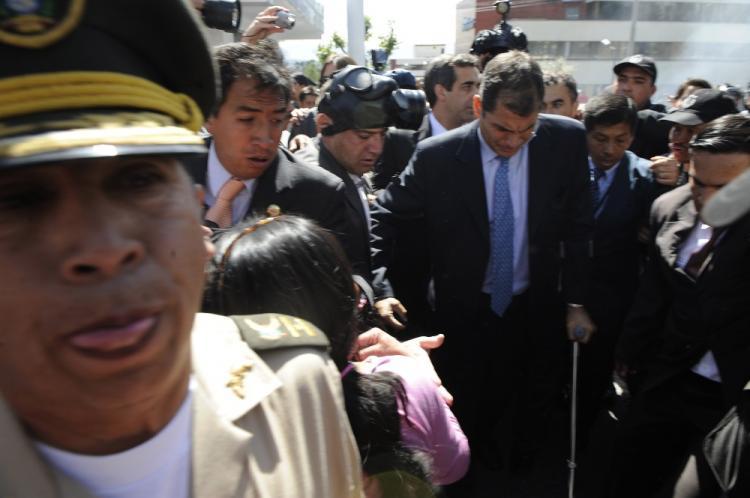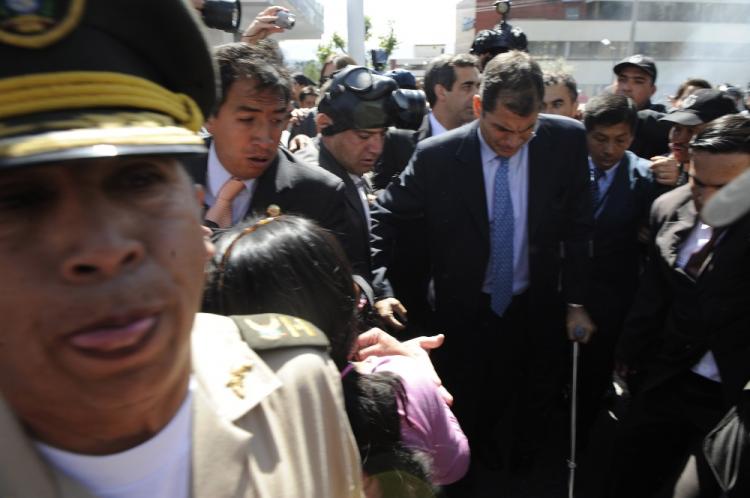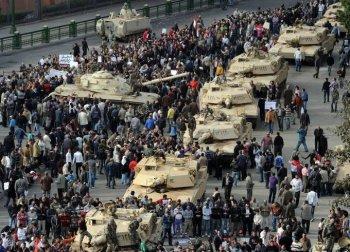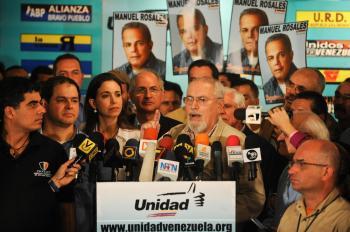Ecuador President Rescued During the Night
Hundreds of armed policemen in the capital of Ecuador rebelled against the government on Thursday.
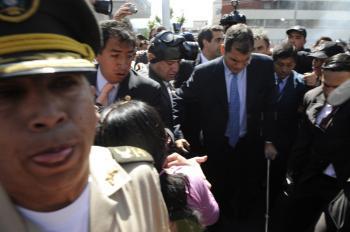
State of Siege: Ecuadorean President Rafael Correa (C) arrives at Regimiento Quito barracks in Quito on Sept. 30. Rodrigo Buendia/AFP/GETTY IMAGES
|Updated:
